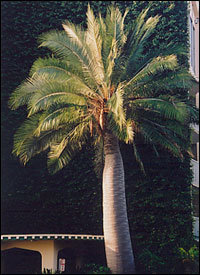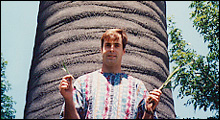~ Jubaea chilensis ~
Chilean Wine Palm
Height: 80' Growth Rate: slow to start, then medium Climate Zones: 4-24 to 10 degrees Origin: Chile
Words cannot explain
the degree of love I have for this species- but I'll try anyway. Imagine
a mini coconut bearing Cuban Royal Palm on steroids and you shall have a
good idea of what Jubaea chilensis looks like. The Chilean Wine
Palm is a large, feather type palm from Chile- as the name implies. It is
a pinnate fronded tree with an overall spread of 20 to 30 feet. When the
tree attains 20' in overall height, the fronds will begin to self clean
off the tree to reveal a massive, creamy grey, smooth trunk. In fact, Jubaea has the fattest trunk of any palm in the world. The common
name "Wine Palm" is derived from the fact that the trunk is
full of a sweet honey like syrup that can be fermented into wine.
Unfortunately for the palm, the whole tree must be sacrificed to do so.
Apparently, the Chileans liked to party more than they liked their palm
trees since most were cut down to make wine, thus landing Jubaea on the endangered species list.
Jubaea, I believe, is the most incredible palm in the world and is
by far, my favorite for the following reasons: 1) It is a very close
relative to the tropical coconut palm, Cocos nucifera, which we
absolutely can not grow outdoors in Northern California, and in fact,
bears miniature coconuts called "Coquitos"; 2) It is arguably
the most cold hardy pinnate palm in the world (to 10 degrees or lower);
3) It is an endangered species as explained above; 4) it specifically
requires a Mediterranean type climate such as our own to survive, and
will not grow in truly tropical climates (this bucks the norm of most
palms doing better in truly tropical climates); 5) The trunk acts as a
backup source of alcohol if the kegs run dry at your next pool party
(just kidding).
I believe the old Latin name tells the story best: "Jubaea
spectabilis". When fully mature, Jubaea (as the old name
implied) is quite a spectacular tree. After growing for a century or
more, Jubaea can attain a height of 50 to 60 feet and will
eventually top out at around 80'. Many large 100 year old plus specimens
can be seen at preserved historic homes throughout California such as the
Shinn House in Fremont, The Stow House in Goleta, and Ganna Walska's
famed Lotusland in Montecito. Jubaea truly was the ultimate
aristocratic tree to plant in the late 1800's.
The only drawback to growing Jubaea chilensis is its rather slow
rate of growth. Having roughly the same proportions as a Canary Palm when
mature, the Chilean Wine Palm is much slower out of the starting gate
than the Canary. However, the tree does gain momentum year after year
with an increasing growth rate curve. When it finally has made its adult
size trunk base in 15-20 years after planting, it grows vertically and
puts on trunk at about the same rate as a Canary Palm- about 10 inches of
trunk per year. However, the Chilean Wine Palm is a visual delight at
just about any age: when it is 2'-7' tall (5-10 years) it reminds me of a
gorgeous cycad, at 8'-14' (10-20 years) its a beautiful tropical mass of
palm foliage at eye level height; at 15'-25' (20-35 years) it's amazing
statuesque trunk begins to reveal itself; at 26'-40' (35-60 years) it
becomes truly treelike and magnificent, and; at 40'+ (60-80+ years) it's
simply palm Nirvana. View our photos below which are arranged from small
to large, upper left to lower right. Since this palm is generally not
available in large sizes, it needs to be planted in a place where it can
be enjoyed at all stages of growth by a patient admirer who is not only thinking of
themself, but the future generations that will undoubtedly marvel at the tree
(and eat its fruit) for many years after the passing of the person who
originally planted it. Planting trees for the future enjoyment of the
people who are yet to be born is a most noble act.
Most nurseries do not want to bother with Jubaea because of its
difficulty of germination, slow growth rate, limited demand, and slow
turnover in the nursery. However Golden Gate Palms is firmly committed to
continuously offer this plant at reasonable and fair prices so that,
hopefully in the middle of this century, when I am old and gray, I can
walk the streets of the Bay Area and commonly see this
tree.
| Click any photo to view an enlarged, printable cutsheet | |||
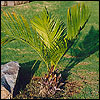 |
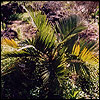 |
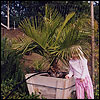 |
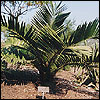 |
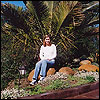 |
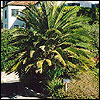 |
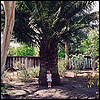 |
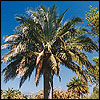 |
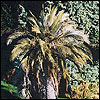 |
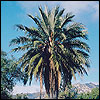 |
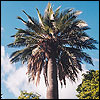 |
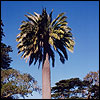 |
Under century old Chilean Wine Palm (Gary's favorite palm species) holding unearthed seedlings, circa 1993

